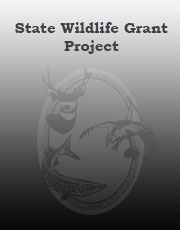Food Habits of River Otters (Lontra canadensis) in the Red River of the North drainage of Eastern North Dakota (SWG T-12-R)
The main goal of this study was to document the food habits of a newly colonizing population of river otters in the Red River of the North and its tributaries in eastern North Dakota. In doing so, one of my objectives was to evaluate the frequency of occurrence of prey items overall and whether there is variation between study areas. I also wanted to compare the frequency of occurrence of prey items among seasons, to assess the seasonality of the diet.
Body-scale relationships of fish from the Red River tributaries of eastern North Dakota will be assessed to determine whether the relationships can be used to estimate the size of fish prey of river otters and other piscivores. The body-scale relationships established using only lateral line scales will be compared with the relationships for non-lateral line body scales to determine which scale type produces a better predictive relationship, thereby providing a more precise method for fish size estimation. Using these relationships, the size of the fish prey of river otters will be estimated, and compared among rivers and seasons to assess differences between study areas, and the seasonality of prey size.

